Day 8: Argonne National Laboratory and the Nuclear Burial sites
|
Pictures of the last day at Argonne National Laboratory, one of the top Research Laboratories in the US. The one which developed the first nuclear reactors in the World for both civilian and military uses (inboard submarines).We got exceptionally the authorization to visit this restricted facility doing research defense related and having some top civilian companies using APS as we were allowed to visit the main Computer Center and its several supercomputers Cray and IBM... The team also visited the burial site of the first nuclear reactor in the world at Palos Park Forest. |
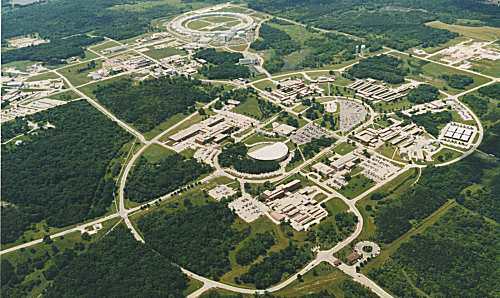
Argonne National Lab or ANL. A huge multidisciplinary scientific complex. |
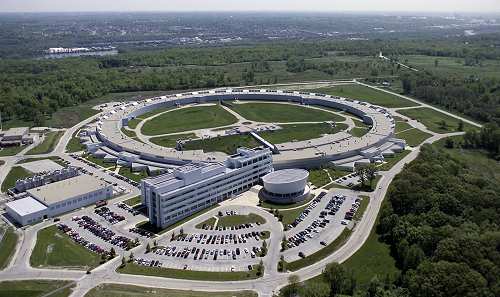
The APS is a state-of-the-art Synchrotron machine which produces high energy X-Rays for various experiments. It can be seen in the back of the complex in the previous picture. |
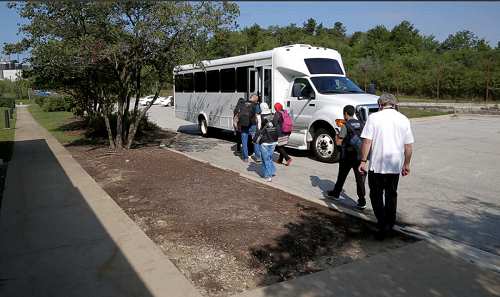
Right after the registration procedure and security check-up, our first visit was to the APS (Advanced Photon Source). |
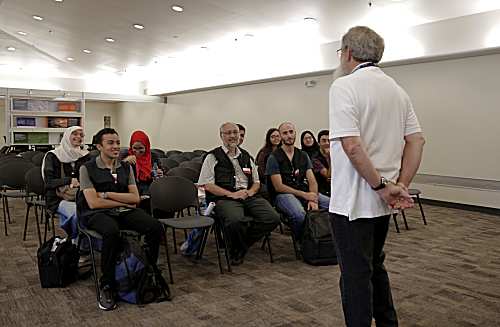
A short briefing about the facility.
|
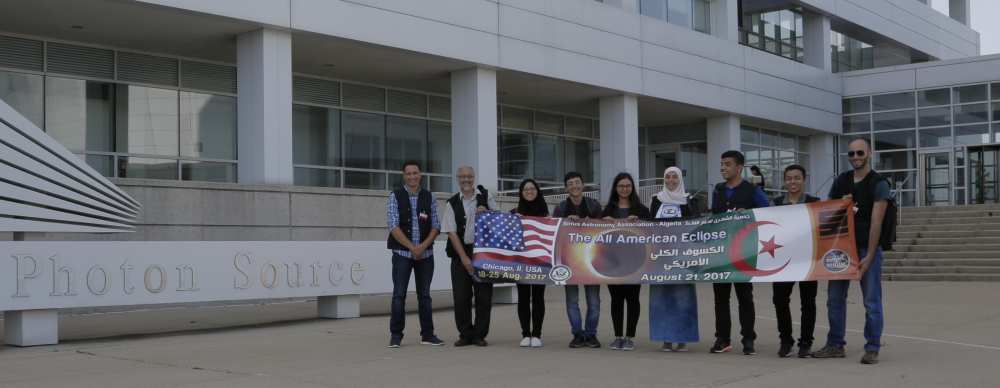
At the APS entrance, a key Argonne facility. |
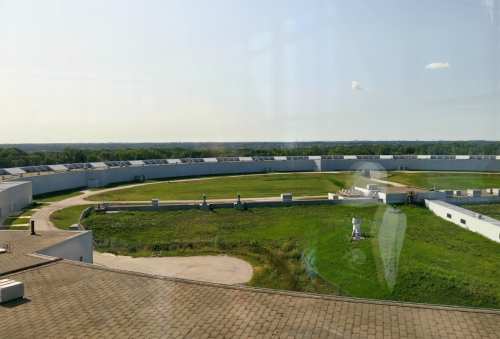
The circular structure contains the APS accelerator. It provides the highest intensity X-ray source in the US. |
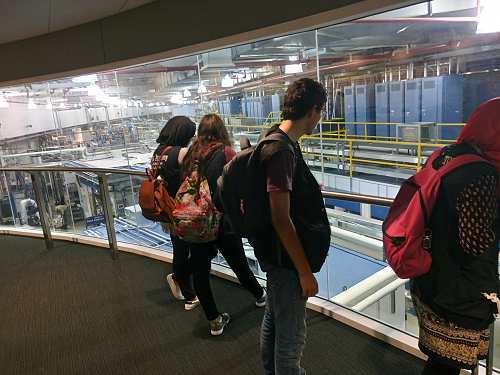
Here looking at the various experimental halls, each one exploiting an X-ray beamline.. |
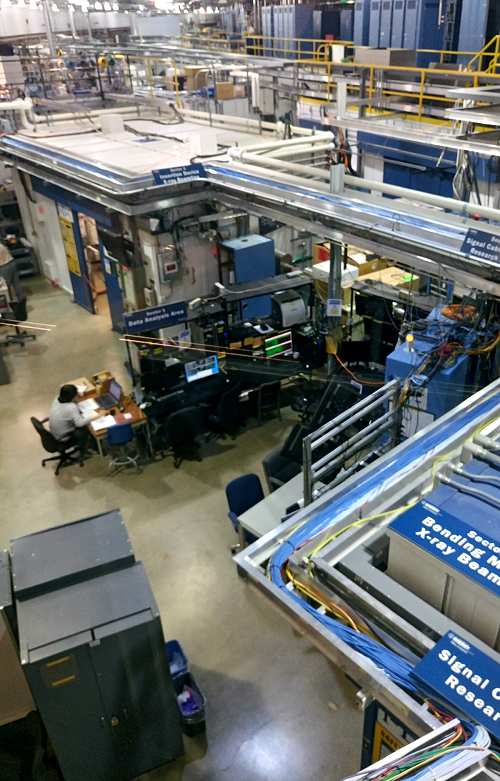
Each of the 35 beam-lines ends at an experimental hall. |
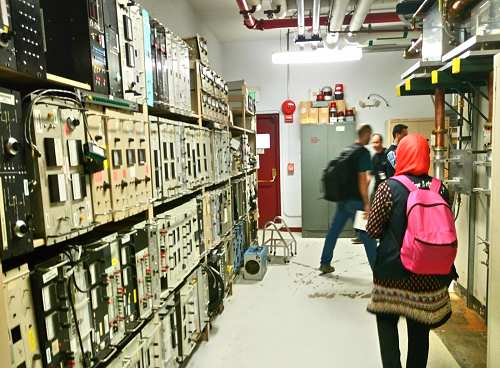
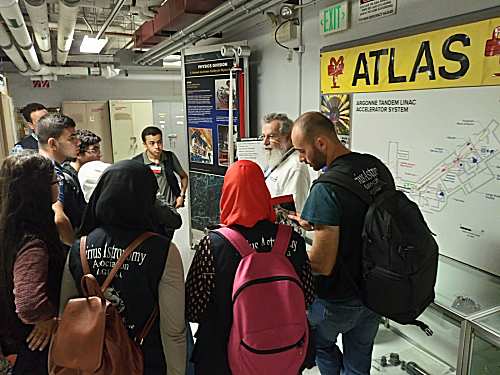
Visiting the ATLAS facility (Argonne Tandem Linac Accelerator System). It is the world's first superconducting linear accelerator for heavy ions. |
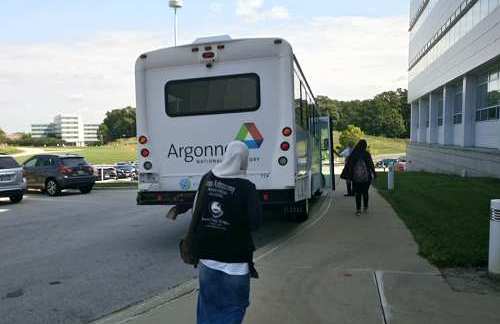 |
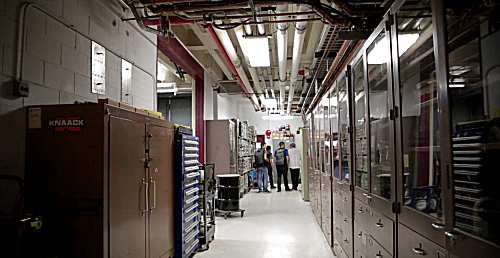 |
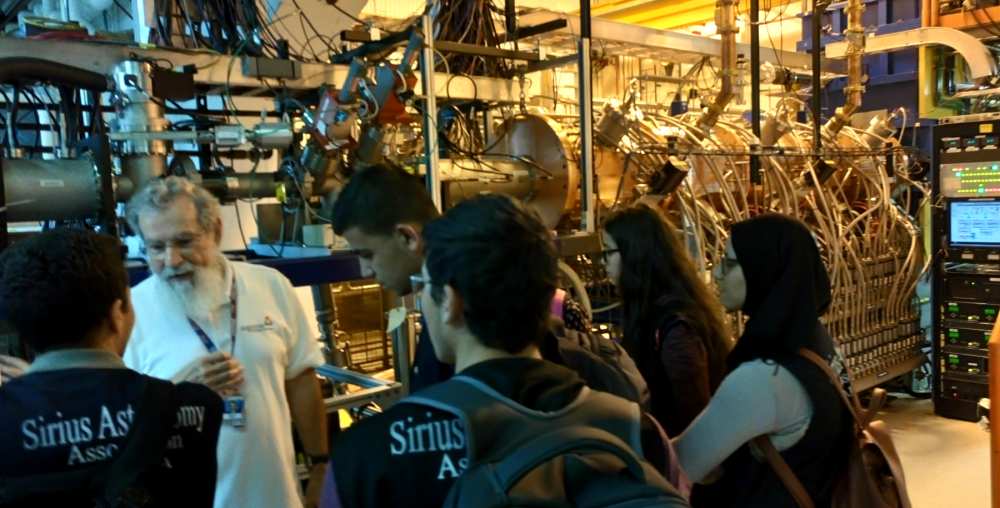
Visiting the various elements of the electron storage ring. Electrons of 7-GeV energy are injected into the storage ring. Then more than 1,000 electromagnets provides the bending to produce X-Rays photons throughout a circular tunnel of some 1100 meters of circumference.
|

Moving to other areas with our special bus. |
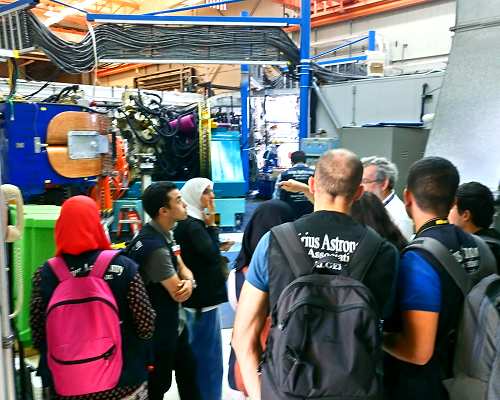 Visiting the Gammasphere: A device which detects gamma rays emitted from the excited nuclei as they spin and cool down. Beams of ions from the ATLAS Linac, are directed at a thin metal film making nuclei fuse, producing highly excited, much heavier nuclei.
Visiting the Gammasphere: A device which detects gamma rays emitted from the excited nuclei as they spin and cool down. Beams of ions from the ATLAS Linac, are directed at a thin metal film making nuclei fuse, producing highly excited, much heavier nuclei. |
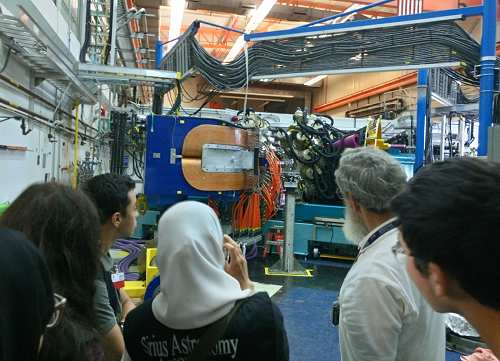
The Gammasphere, a 12-ton gamma-ray "microscope" to explore the rim of the valley of nuclear stability. |
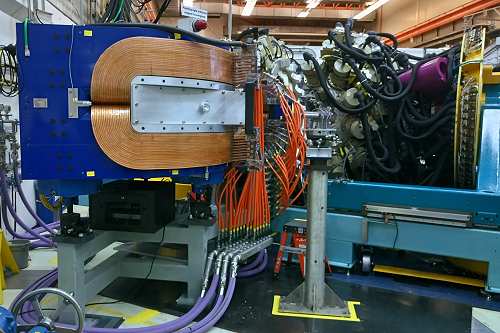
A close-up. It consists of 110 high-purity germanium detectors, each about the size of a coffee cup, in a spherical arrangement, and it enables scientists to find new isotopes and even new elements. |
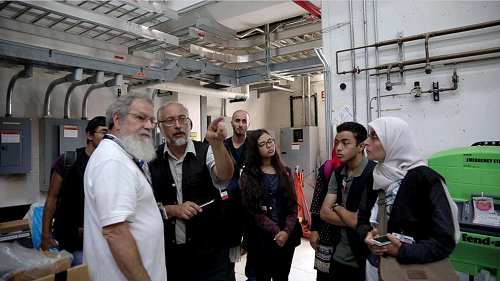 |
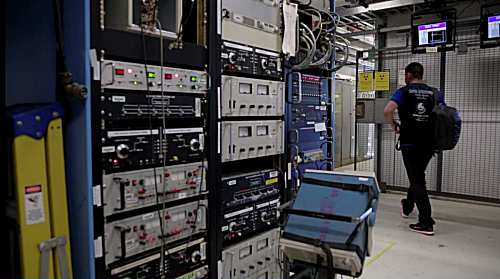 |
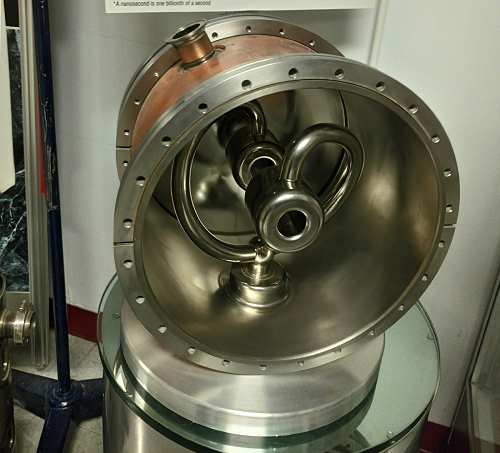
Accelerating cavity for the electrons of ATLAS. |
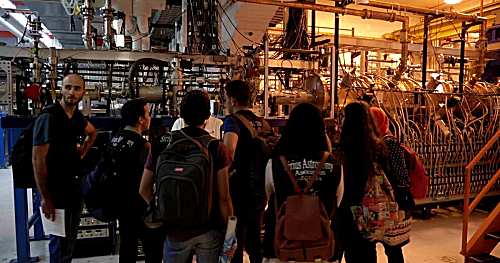
 |
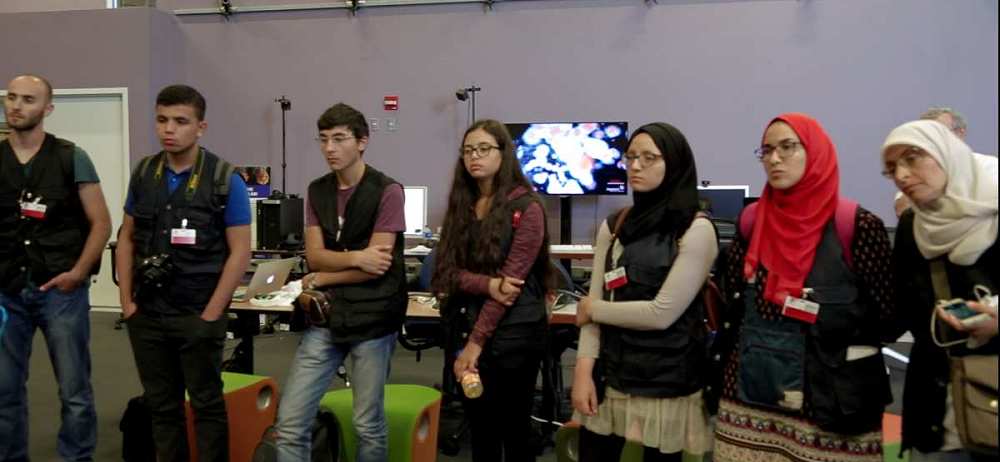 |
At the Supercomputers Center |
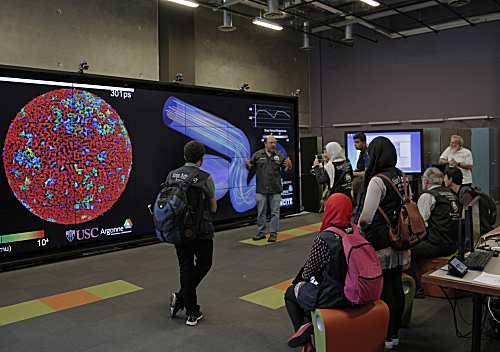 |
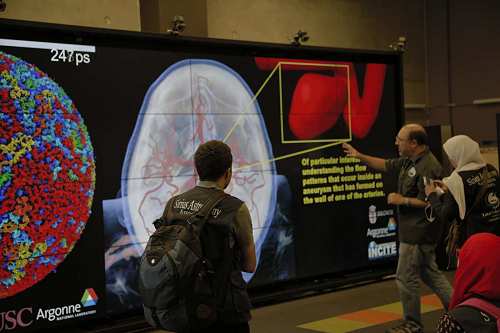
Simulating anything from protein interaction with tissues ... |
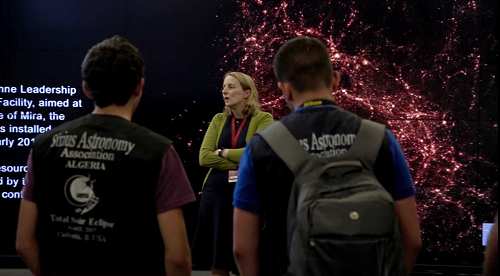
... to Dark Matter distribution in the Universe. |
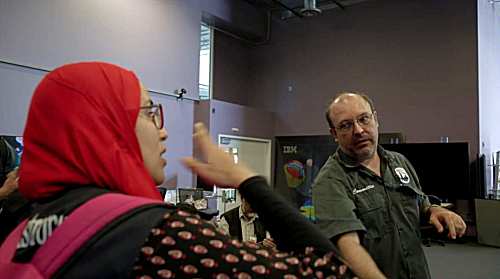 |
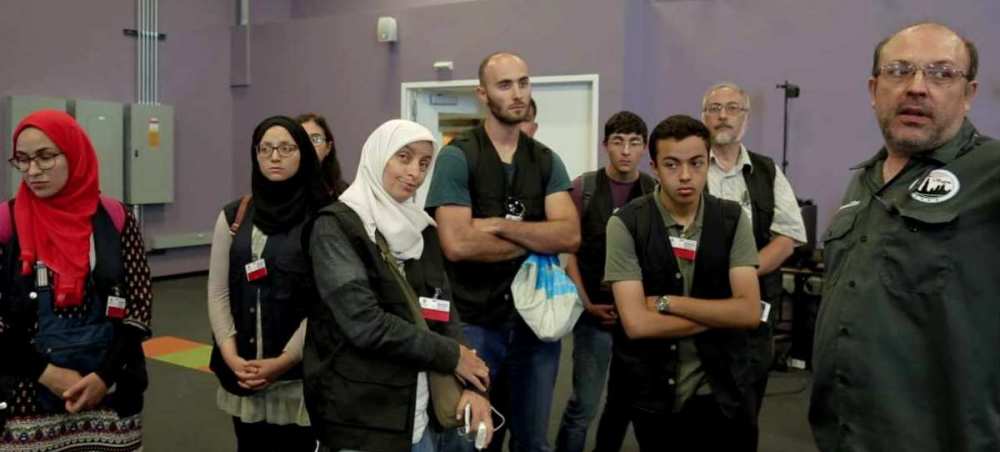 |
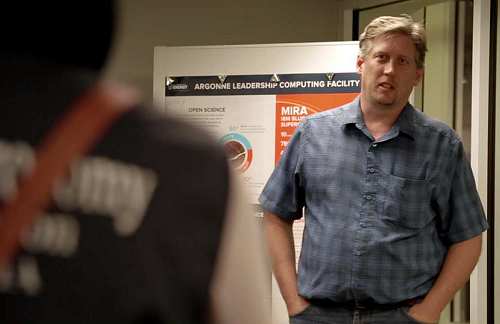
Meeting with the head of the Argonne Leadership Computer Facility |
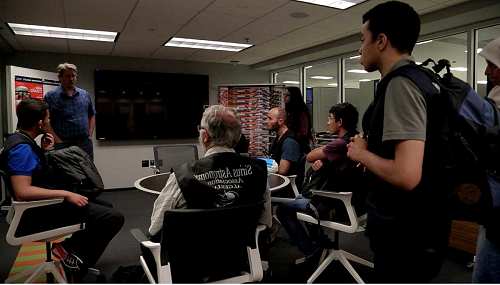 |
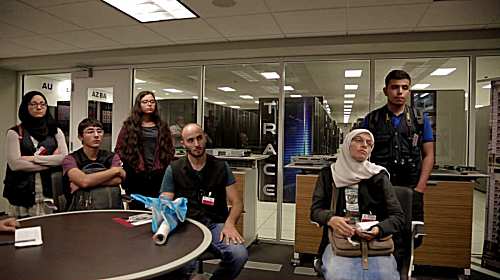 |
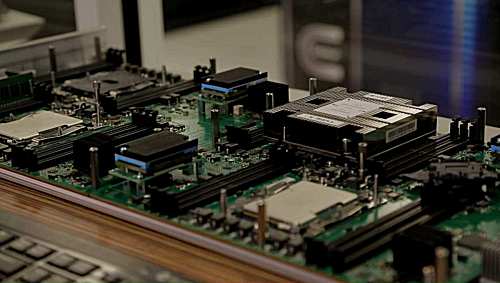 |
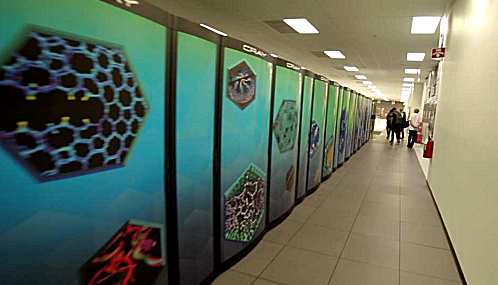
Walking along side the huge supercomputer from CRAY company. |
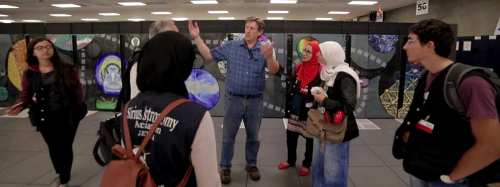
Here is the Myra Mark Supercomputer from IBM. A third supercomputer is planned to be developed too. |
|
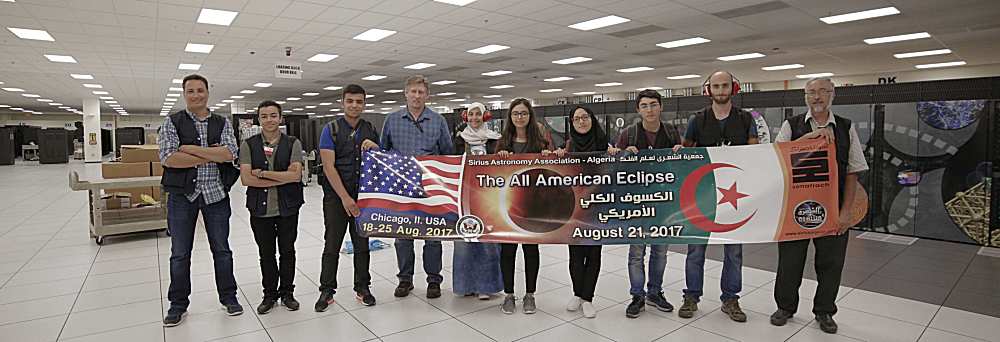
In front of the Argonne's Myra Mark Supercomputer. Two of the team members are wearing a headpiece, why? The answer here. |
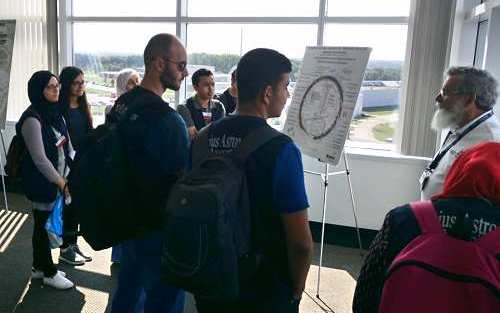 |
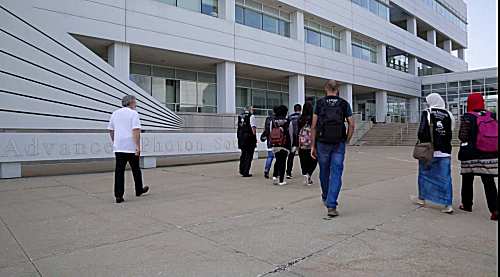
Leaving Argonne... |
Visiting the Nuclear Burial Sites |
Une Randonnée Forestière à la Recherche du Premier Réacteur nucléaire
Non loin d'Argonne, sur l'ancien site d'expérimentation nucléaire, se trouve enterré les deux premiers réacteurs nucléaires du Monde, dont la pile atomique conçue par Fermi à l'Université de Chicago ainsi que des artefacts radioactifs du début de l'ère nucléaire. Nous avions déjà briefé le groupe en Algérie sur cette expédition particulière pour aller à la recherche de ces témoins du début de l'ère nucléaire qui sont en plein milieu de la Red Gate Forest. C'est une zone publique certes mais ces lieux sont mal marquées et leur visite demande une belle randonnée... |
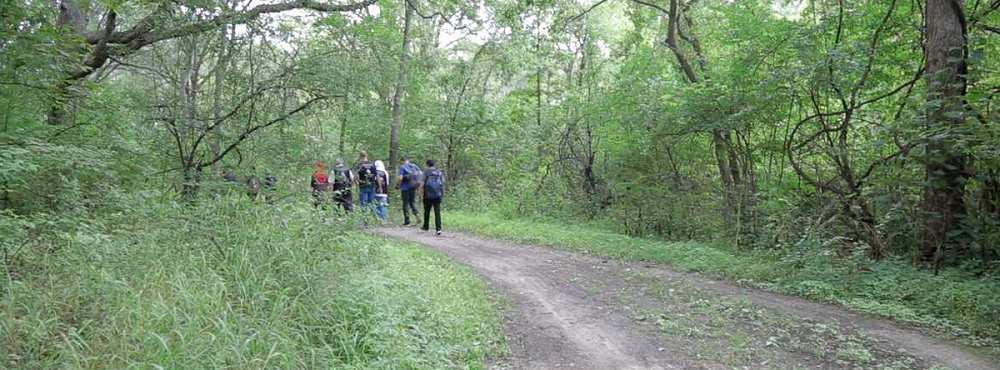
After our visit to Argonne National Lab, we veered away to look for the burial site of the first nuclear pile built by man.
That which was built by Enrico Fermi in 1942 at the University of Chicago and was then moved at that place when the early Argonne Lab fully dedicated to develop nuclear energy site was situated in this forest. Some 10 miles away, we had to leave our cars and engage in a rather dense forest using only our GPS for guidance.. |
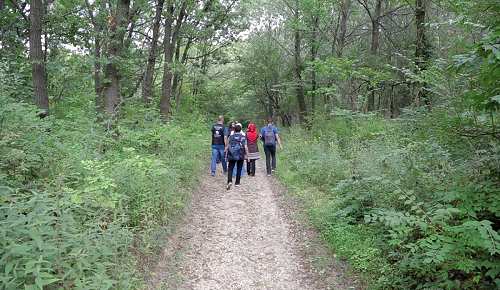 |
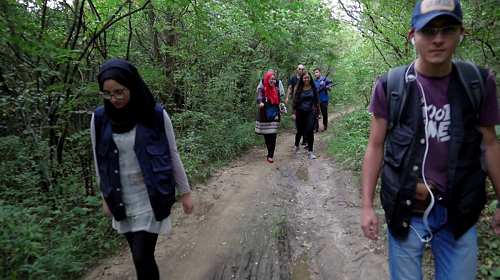 |
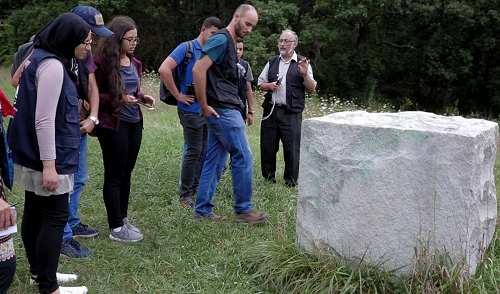
We finally reached the first burial site which was of various nuclear objects which has been disposed off due to its long term radioactivity although cleaned up. |
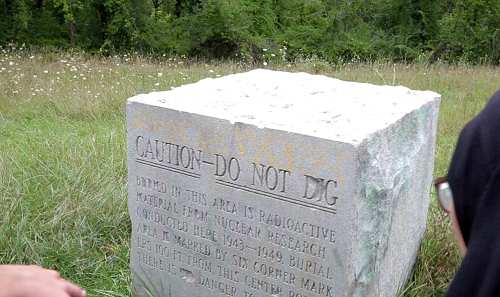
Here's the markings... a bit vandalized! With a large an ominous title: Do not dig! |
Looking for the second burial site, that of the first nuclear pile in the World! |
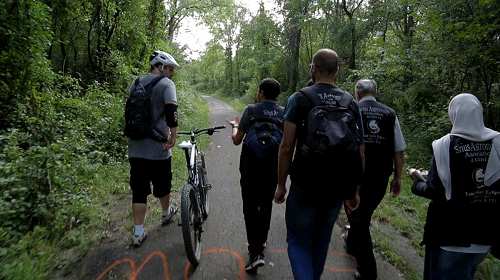 We pursued our way in and met a biker who despite his aversion for nuclear energy, being in addition a libertarian, he volunteered to lead us to the second site where the University of Chicago's first nuclear pile was functioning for many years before being decommissioned and dismantled.
We pursued our way in and met a biker who despite his aversion for nuclear energy, being in addition a libertarian, he volunteered to lead us to the second site where the University of Chicago's first nuclear pile was functioning for many years before being decommissioned and dismantled. |
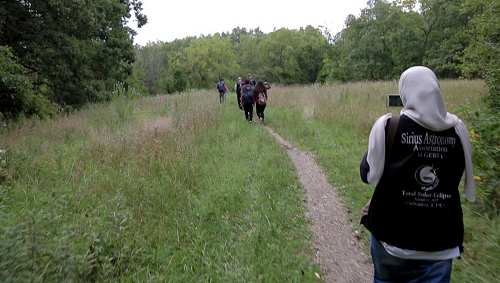 |
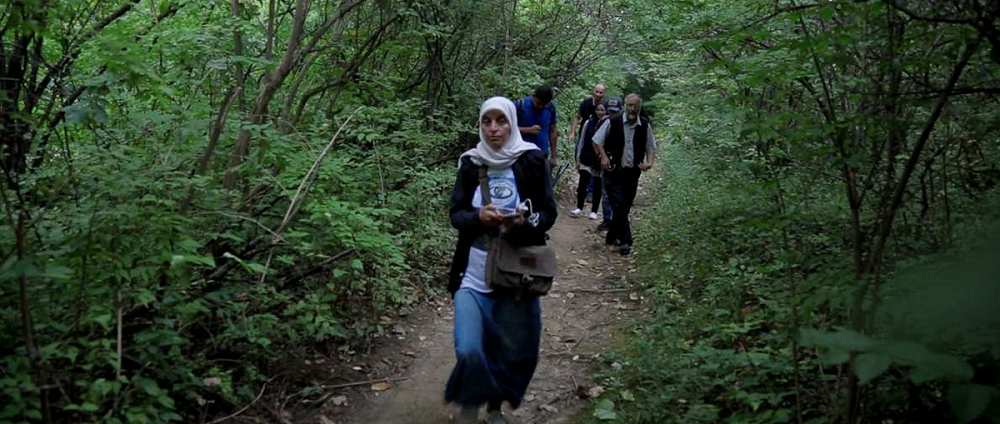
Several kilometers further down, and we finally reached the nuclear site. |
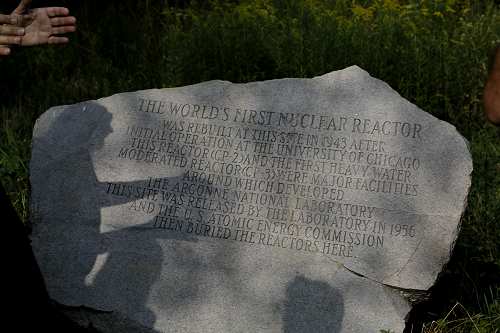
Only a marking on a stone was there. Almost anonymous, a monument of contemporary history... is buried underground. |
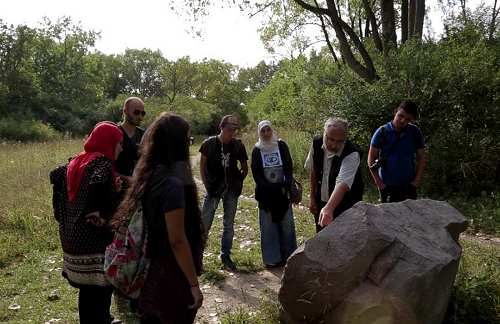 |
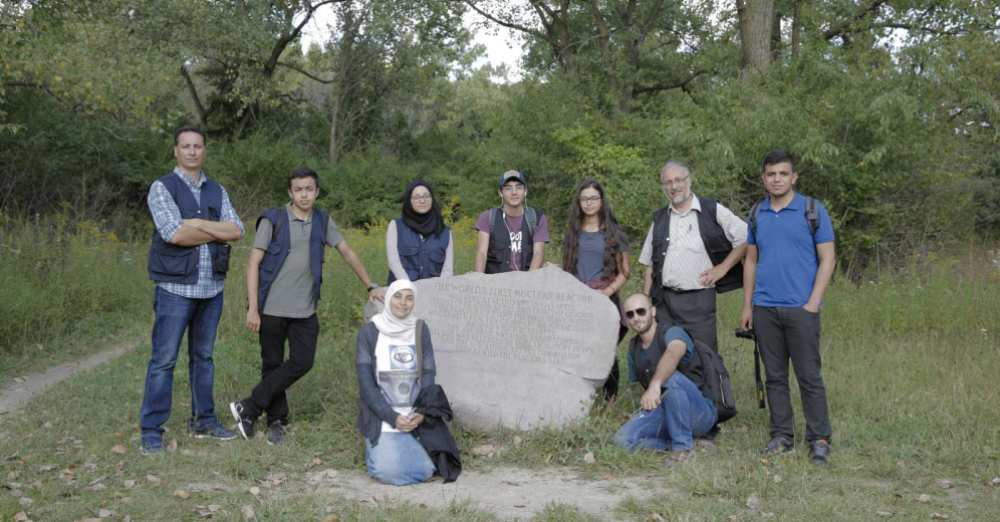 Mission accomplie!
Mission accomplie! |
|
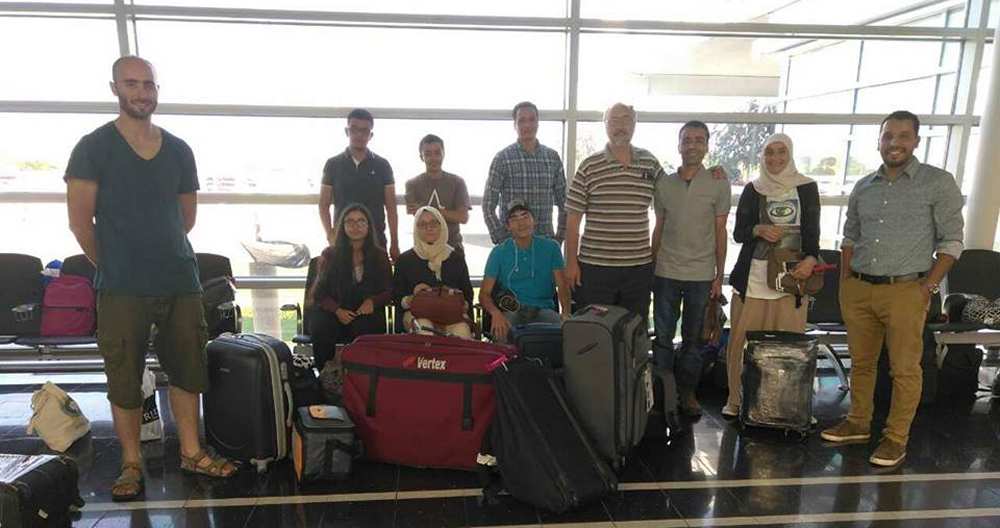
At O'Hare International Airport, leaving the US.. |
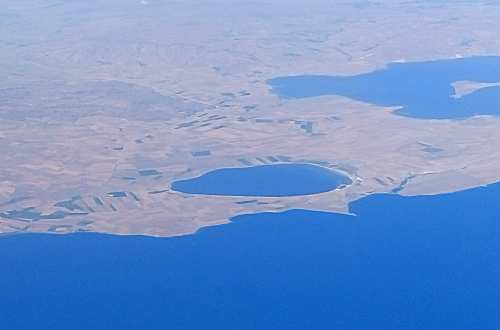
Over the Black Sea |
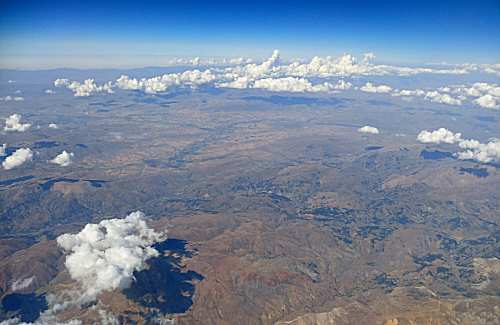
And Iraqi territories |
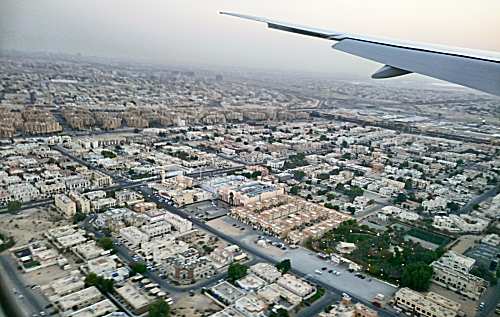
Reaching Dubai... |
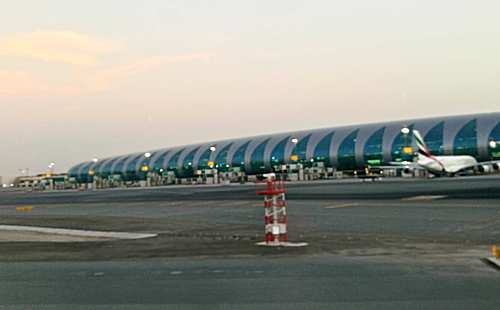
The huge Dubai terminal |
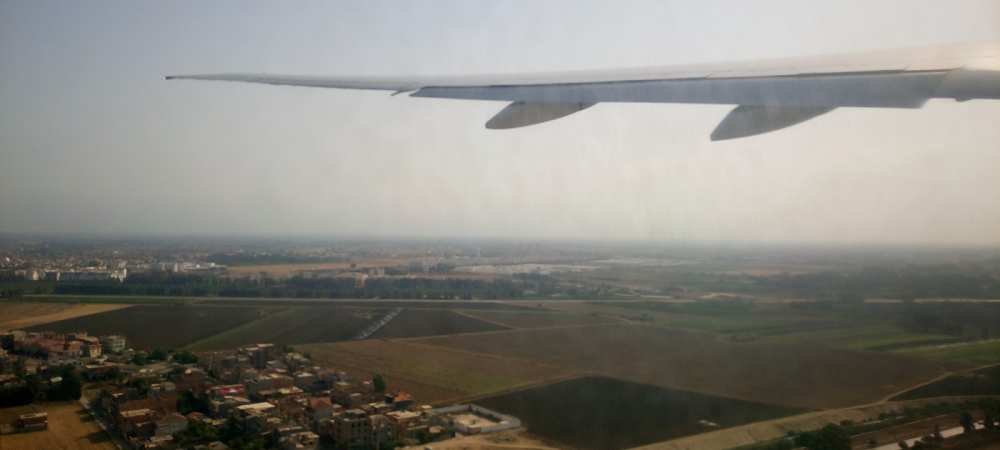
And back home to Algeria. |



